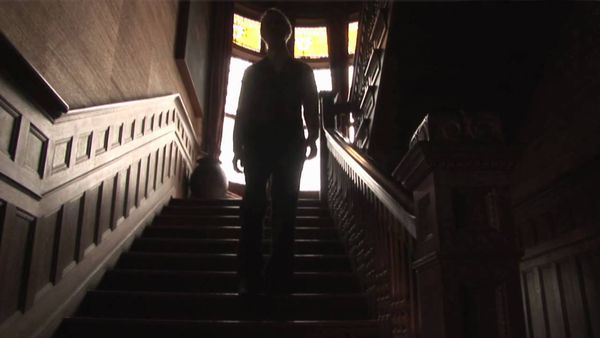Eye For Film >> Movies >> Sredni Vashtar (2003) Film Review
Sredni Vashtar
Reviewed by: Jennie Kermode

Just ten minutes long, but packed with powerful imagery, Angela Murray's film adaptation of the Saki short story lingers in the imagination indefinitely. It tells the tale of Conradin, a young boy dying of a mysterious illness, who lives in the care of his aunt.
Murray's version extends the original story to include the death of the boy's parents, living abroad, from the same illness, and there's an implication that she might be poisoning him, at least sufficient to suggest that he suspects it and to add to his motivation. "You are blessed by your illness because you can praise God with your gracious acceptance," the aunt advises the boy, but his own reaction to his situation is different, and he spurns her devout Anabaptism for a strange religion of his own creation centered on the creature he keeps in a locked hutch in the garden shed.
"Sredni Vashtar went forth. His thoughts were red and his teeth were white. His enemies asked for peace but he brought them death. Sredni Vashtar the beautiful." Illustrated with Indian shadow puppetry, black against a crimson background in stark contrast to the bleak hues of the live action sequences, this mantra is repeated to chilling effect, and it's easy to see how powerful the god has become in the boy's imagination.
Despite its shortness, Sredni Vashtar offers insight into a number of issues, some of them rarely tackled in this medium. Most affecting is its illustration of the distance between the two central characters, centered on the failure of the aunt to comprehend the boy's emotional reaction to his situation. Although her life is focused on him, she is quite unaware of the ferocity of his will to live and of the changes which the proximity of death have worked upon his moral compass. Her fatal mistake is to dehumanise him, thereby losing sight of his human potential. This misunderstanding is naturally heightened by religious differences between the pair. Murray shows Conradin wrapping himself in an Indian shawl and implies that religious encounters on the subcontinent might have influenced what he has created for himself. He is at home in the squalid environment of the shed, where he shows a reverence for nature, perhaps enhanced by his awareness of his own mortality, which is completely absent from the orderly house his aunt keeps.
The power of this film rests on perfect performances by Fergus Nimmo as the boy and Sian Thomas as the aunt. No sentimentalism is allowed to enter into them, yet both demonstrate a complexity which goes far beyond what their few lines can express. The costumes and set dressing complement this beautifully, but most memorable of all is Balazs Bolygo's photography. The whole film looks faded and antique, a creature made manifest from the darkest corners of the imagination. Strong colours are used only to pick out items of great importance to Conradin: the green of the medicine bottle, the red of the offerings he makes. In this way, the viewer is made intimate with the boy's secret world, and, to a degree, complicit in his acts.
It should be noted that, unlike the earlier animated version of the story, this film is not aimed at children, though older ones may enjoy it. It belongs to the old fairy tale tradition in which nothing is held back to protect the sensitivities of the audience. Sredni Vashtar is haunting and beautiful, a rare treat.
Reviewed on: 11 Jul 2007















